This is the eleventh in a series of posts about the Nikon 70-200 mm f/2.8 S lens for Nikon Z cameras. The series starts here.
In a previous post in this series, I found that my copy of the Nikon 70-200 mm f/2.8 S wasn’t quite up to the high standard set by the F-mount version, the 70-200 mm f/2.8 E when both lenses were set to 200 mm. In this post, I set out to quantify that. Several people have said that the S lens is slightly better than the E lens wide open at 200mm. I am reminded of one of Roger Cicala’s bon mots: if you return a zoom lens because it doesn’t perform well at one focal length, you’ll get back a lens that doesn’t perform well at a different focal length. Nevertheless, I persevered. I created a target that combined a 144-spoke sinusoidal Siemens Star and a slanted edge, both at low contrast. I photographed it from a distance of 22 meters.
Other particulars:
- ISO 64
- f/2.8
- Manual exposure, ETTR in live histogram.
- Subject in the center and the upper right corner.
- AF-S pinpoint focusing.
- Six shots at each setting, focusing anew for each shot, picking the best using the Imatest sharpness ranking utility. This method calibrates out focus curvature.
- Developed in Lightroom
- Sharpening set to zero.
- White balance set to gray background on Siemens Star target
- Adobe Color Profile
- Minor exposure adjustments, with same adjustment applied to all images from both lenses, so corner darkening is unaffected.
- Chromatic aberration correction turned off.
- Everything else at default settings
The scene, with the target centered using the S lens wide open.
The target:
MTF on axis, using the slanted edge:
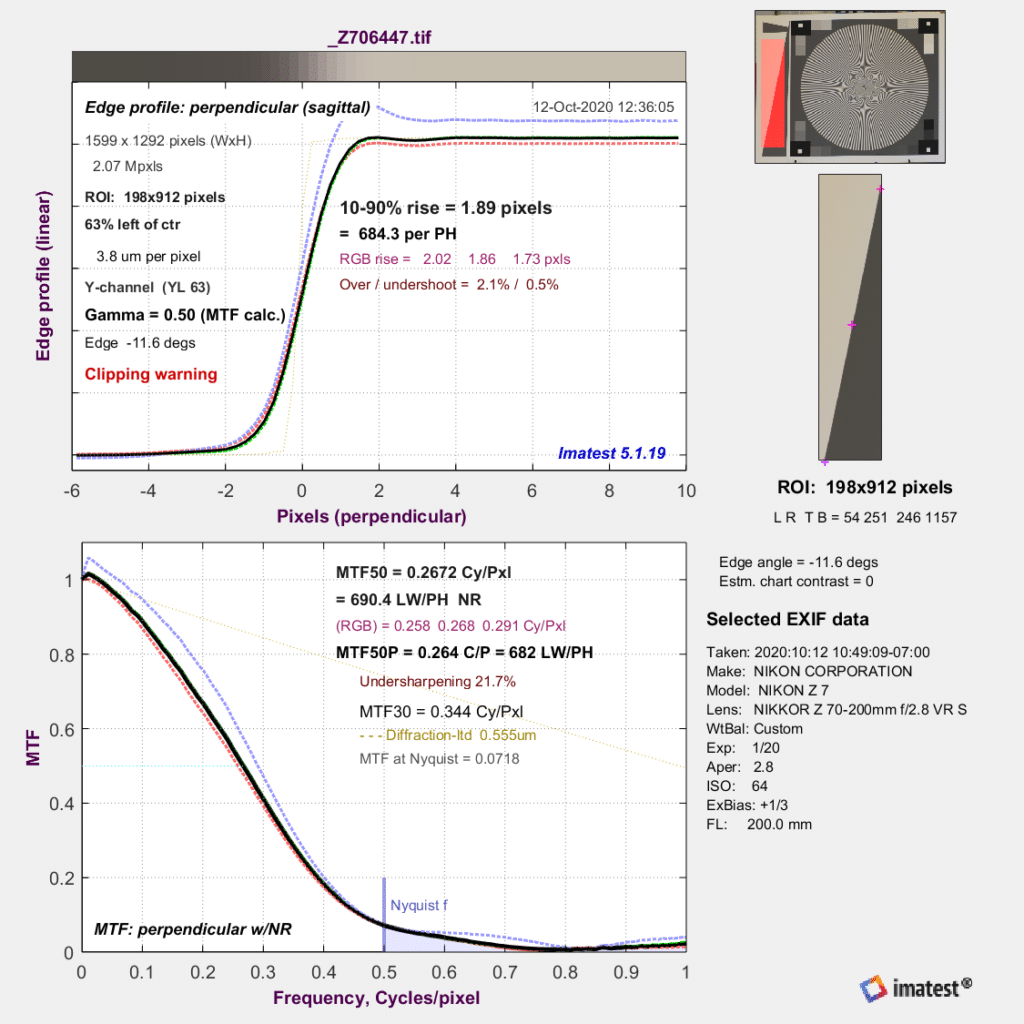
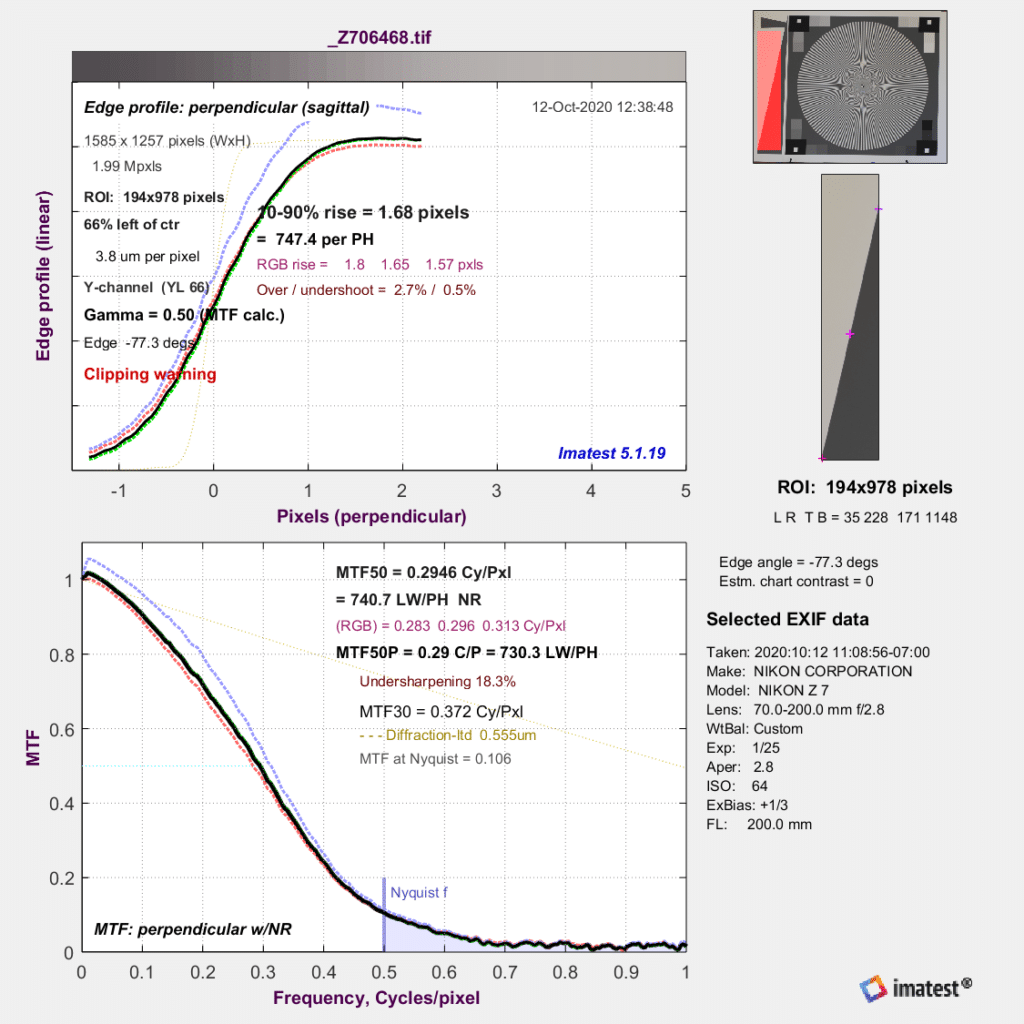
These results are very close.
In the corner:
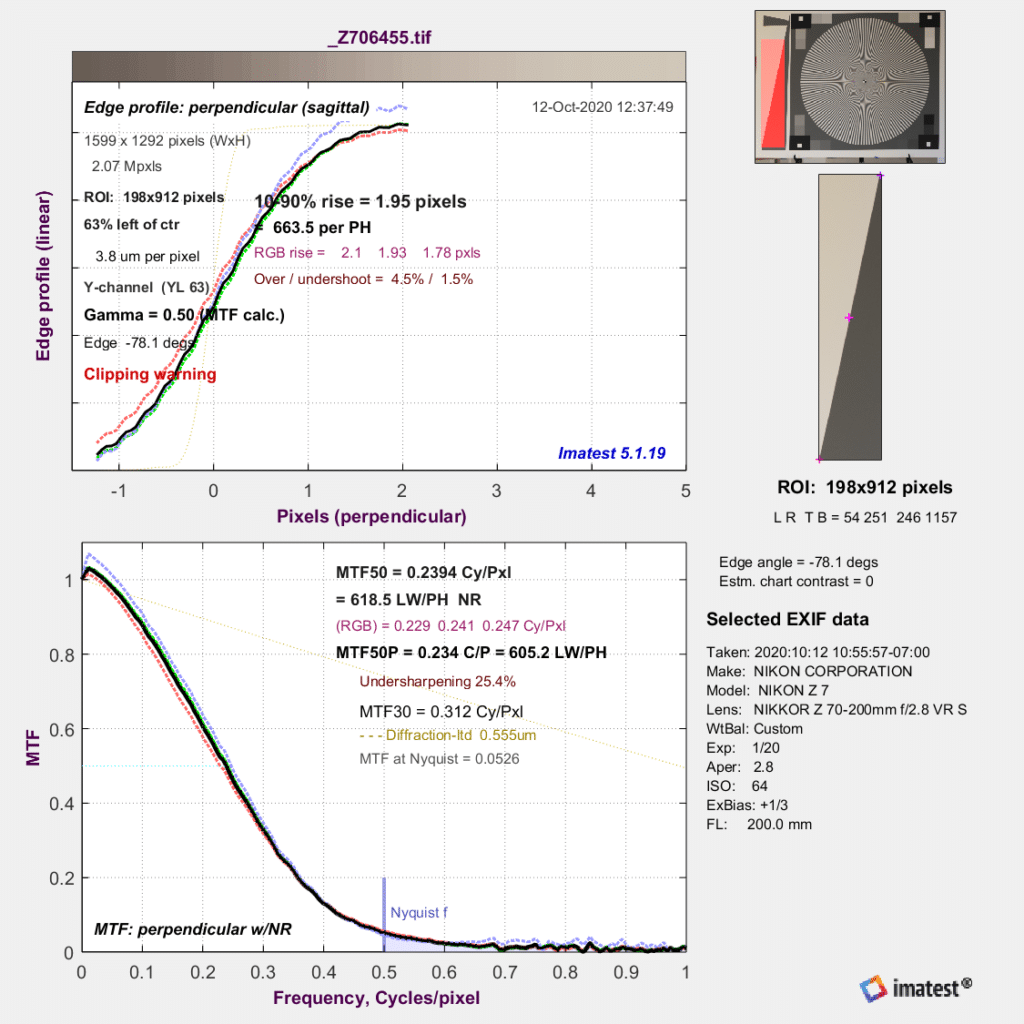
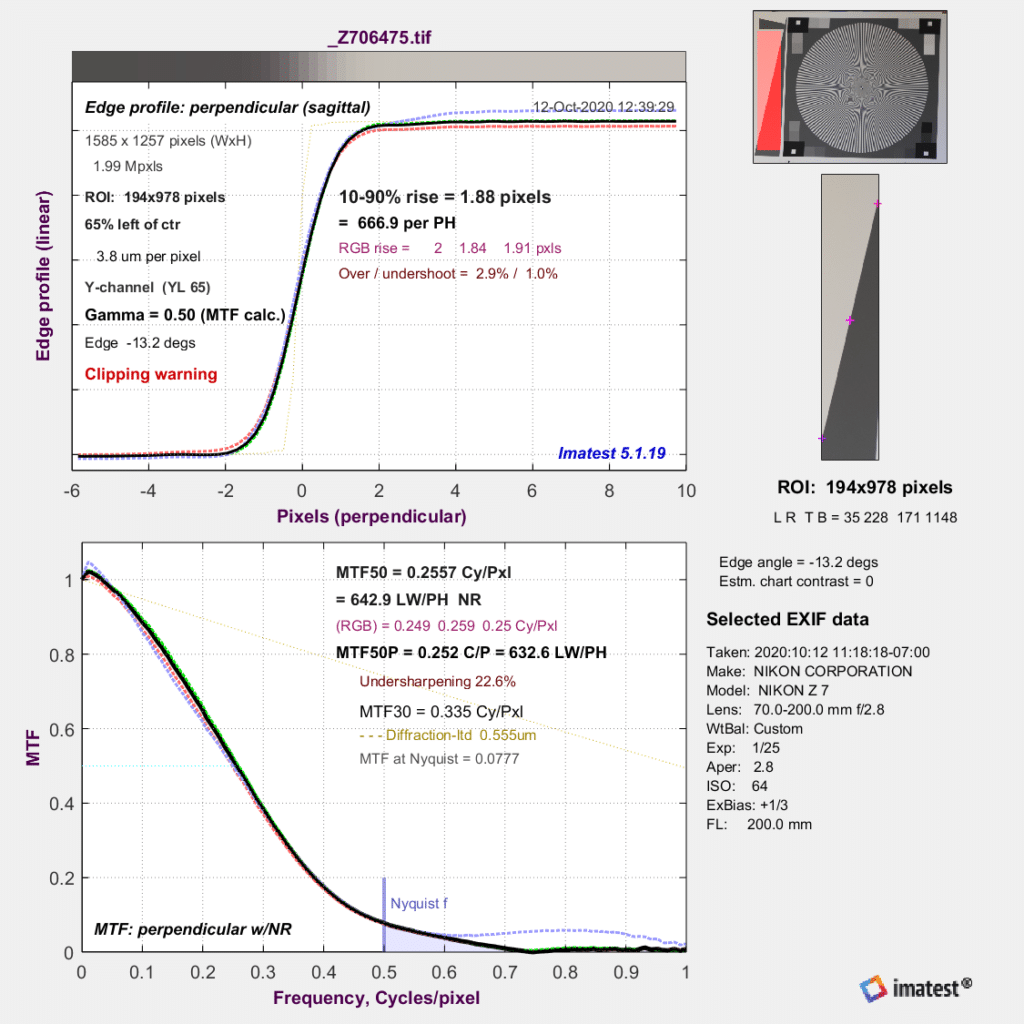
Again, I’m not seeing much difference here. The E lens is a little sharper, but not much.
Looking at sharpness in all directions, using the Siemens Star part of the target:
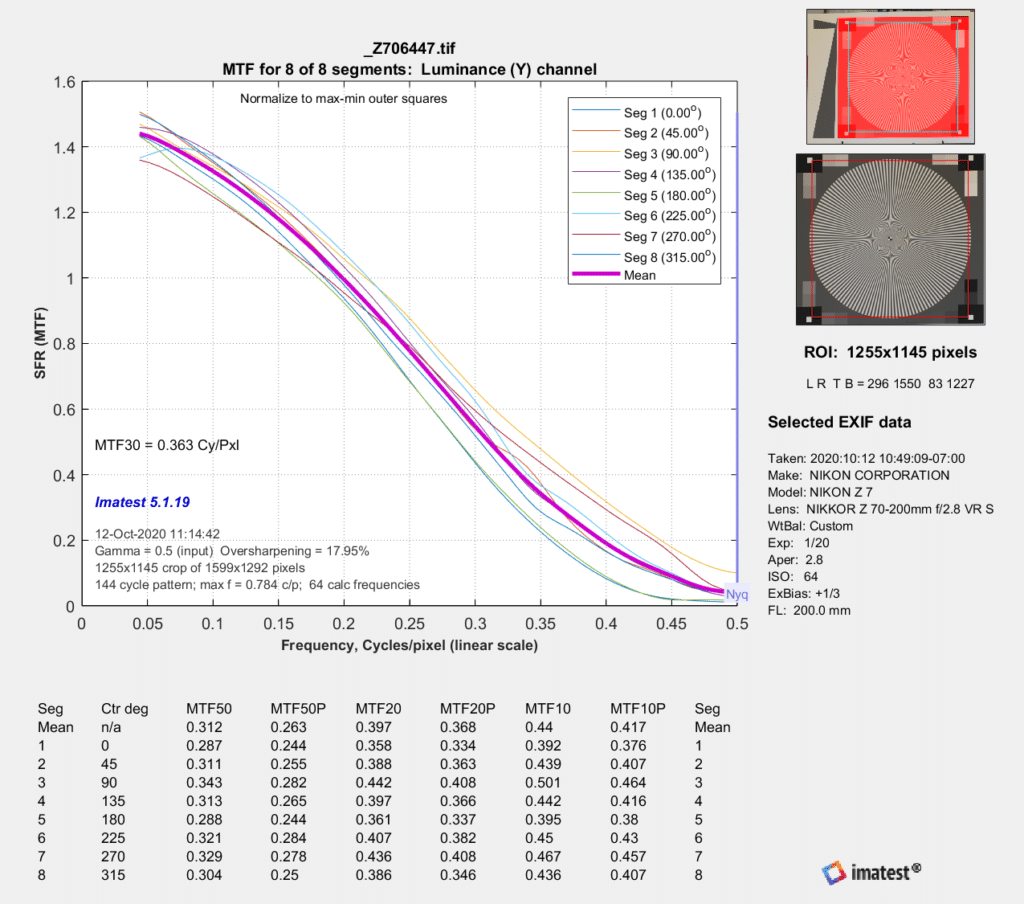
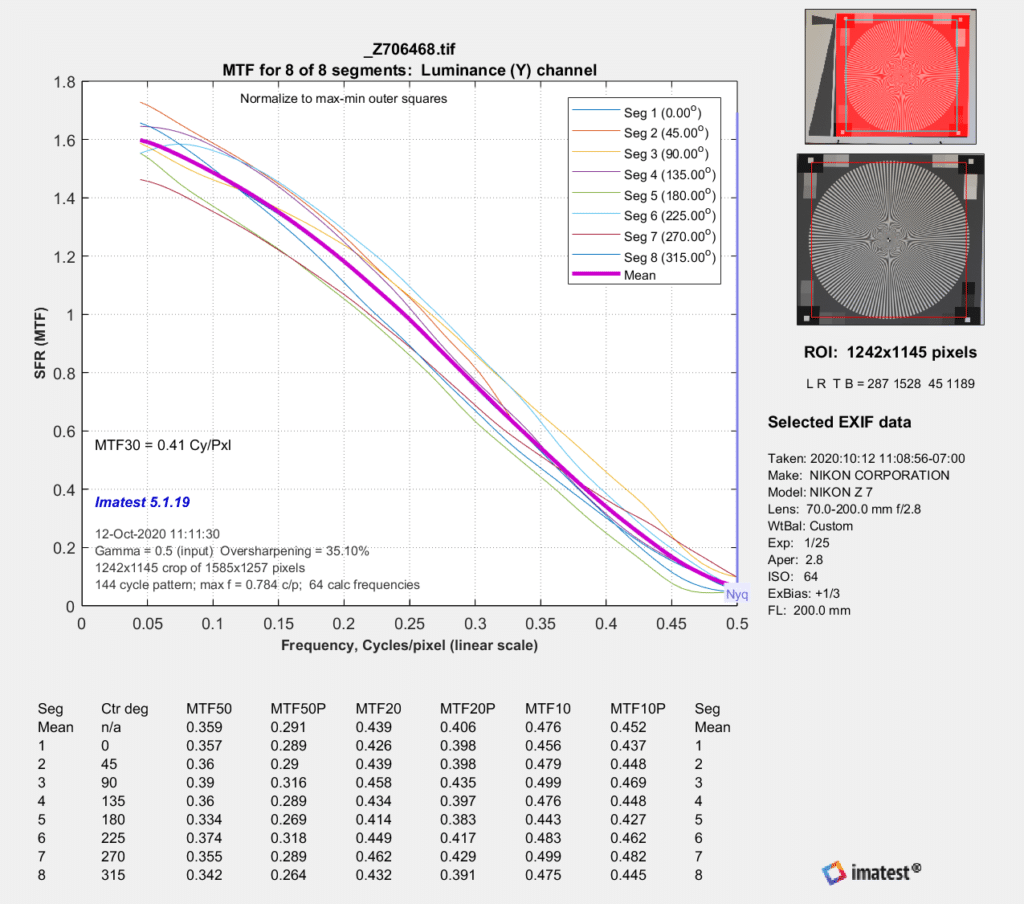
Again, the two lenses look very similar.
In the corner:
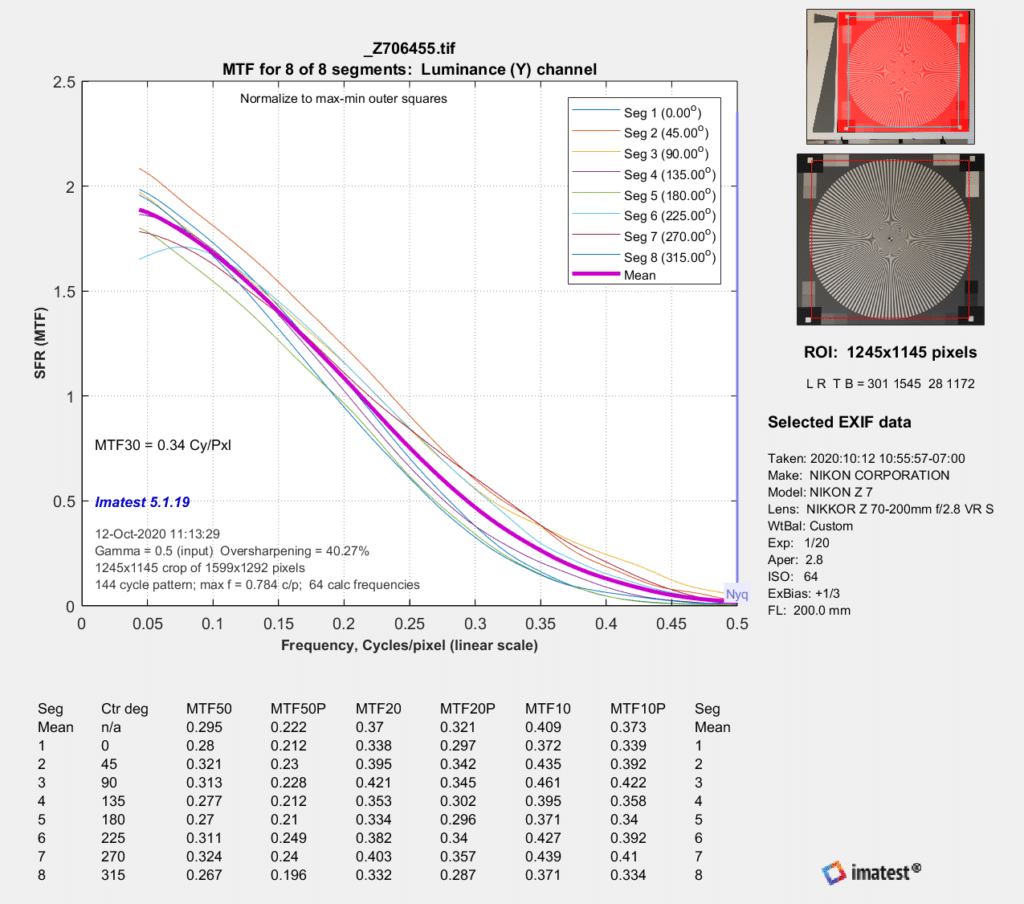
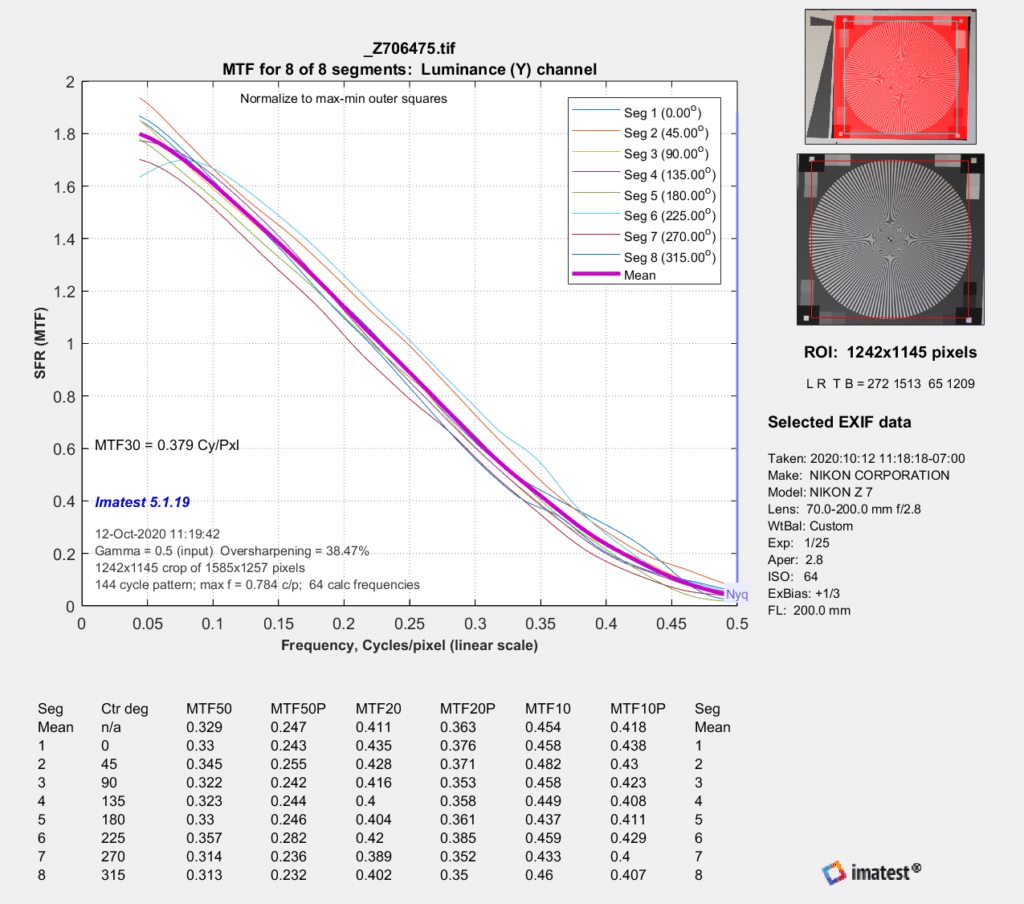
The E lens is better, but it’s certainly not night and day.
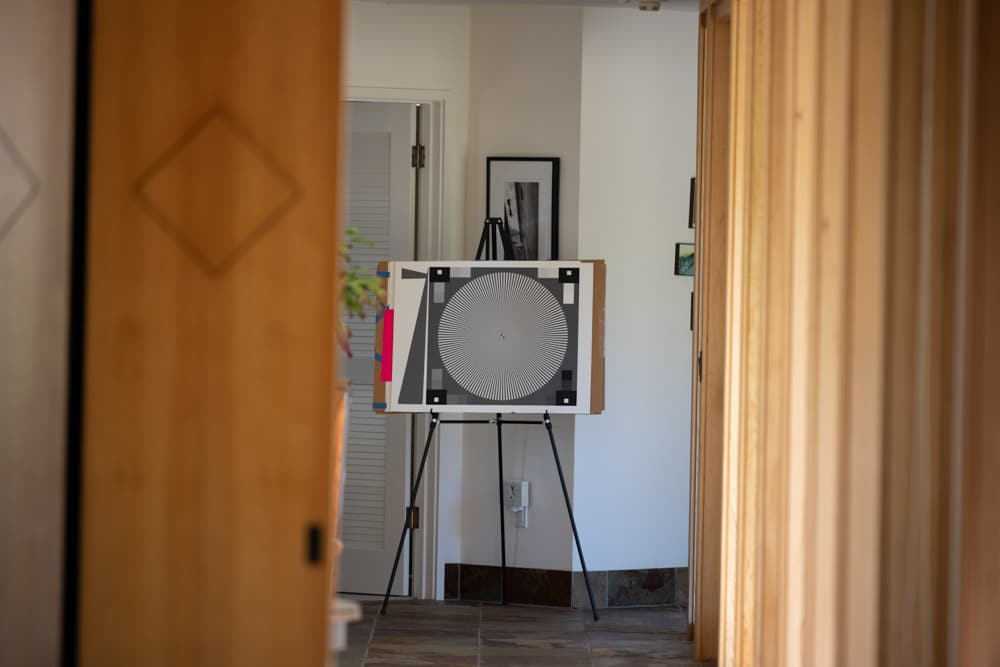
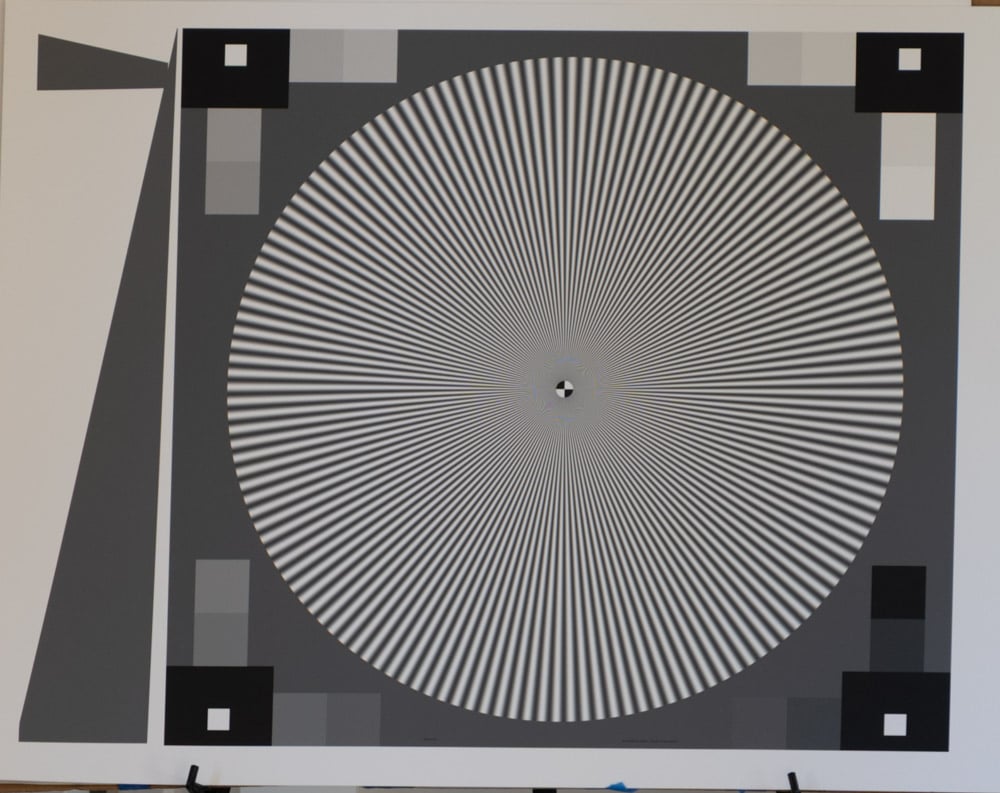
Leave a Reply